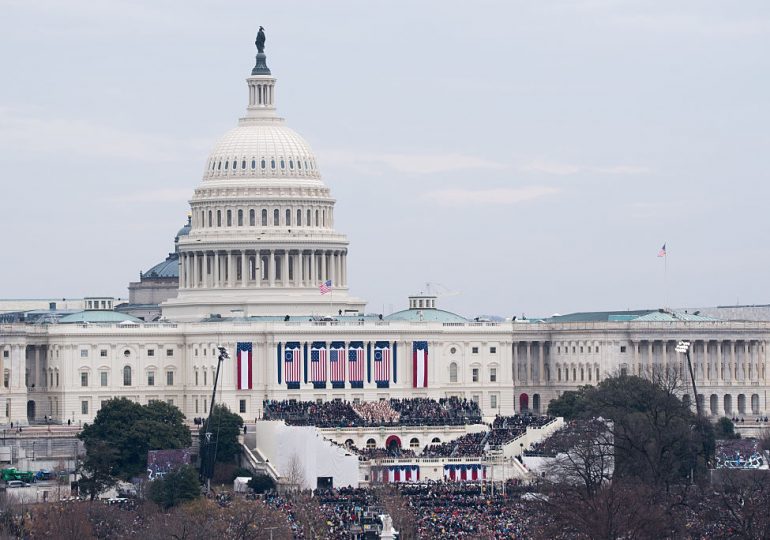Donald Trump will be sworn in as the next President of the United States on Monday, Jan. 20.
Inauguration Day takes place every four years on Jan. 20 at the U.S. Capitol Building in Washington, D.C. On years when Jan. 20 falls on a Sunday, the incoming President still takes the oath of office privately on that day, but the public inauguration occurs on Jan. 21, according to Shannon Bow O’Brien, an associate professor of instruction in the government department at the University of Texas at Austin. Events on the day include the swearing-in ceremony, the inaugural address, and the inaugural luncheon.
[time-brightcove not-tgx=”true”]
For Trump’s inauguration, marking his return to the White House, several music artists are set to perform, including Grammy award-winning country singer Carrie Underwood, who is expected to sing “America the Beautiful.”
But Inauguration Day didn’t always take place in January. Initially, Congress had set March 4, 1789 as the date “for commencing proceedings” of the new government, according to History.com. But bad winter weather delayed George Washington’s inauguration for several weeks, and he wasn’t inaugurated until April 30, 1789, in New York City (at the time the nation’s capital), O’Brien says. For over a hundred years, Presidents and Vice Presidents after Washington were typically sworn in on March 4.
Read More: 11 Things to Do on Inauguration Day That Are Great for Your Mental Health
The gap between Election Day and Inauguration Day was partly because of how long it took officials to tabulate votes, according to History.com. And travel took longer because of poor road conditions, O’Brien says. The extended gap sometimes caused issues between the outgoing and incoming Administrations.
“We have this period where we kind of functionally have two Presidents,” O’Brien says. “You’re seeing it right now: Donald Trump is still a private citizen at this moment in time, until Monday, but everybody is treating him almost like the President right now, and Joe Biden is really taking a back seat at many levels. We kind of have two Presidents right now, and that used to go on for about four months.”
That was one of the reasons behind the decision to move up Inauguration Day. At the same time, advancements in technology helped speed up the process of counting votes, according to History.com. Travel and road conditions also improved, O’Brien says. So in 1933, the 20th Amendment was ratified, changing Inauguration Day to Jan. 20 and the first session of the new Congress to Jan. 3. The first time Inauguration Day took place on Jan. 20 was four years later, in 1937, setting forth the tradition we follow now.
Leave a comment








